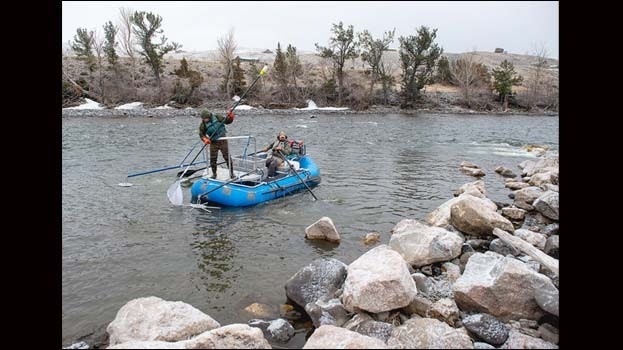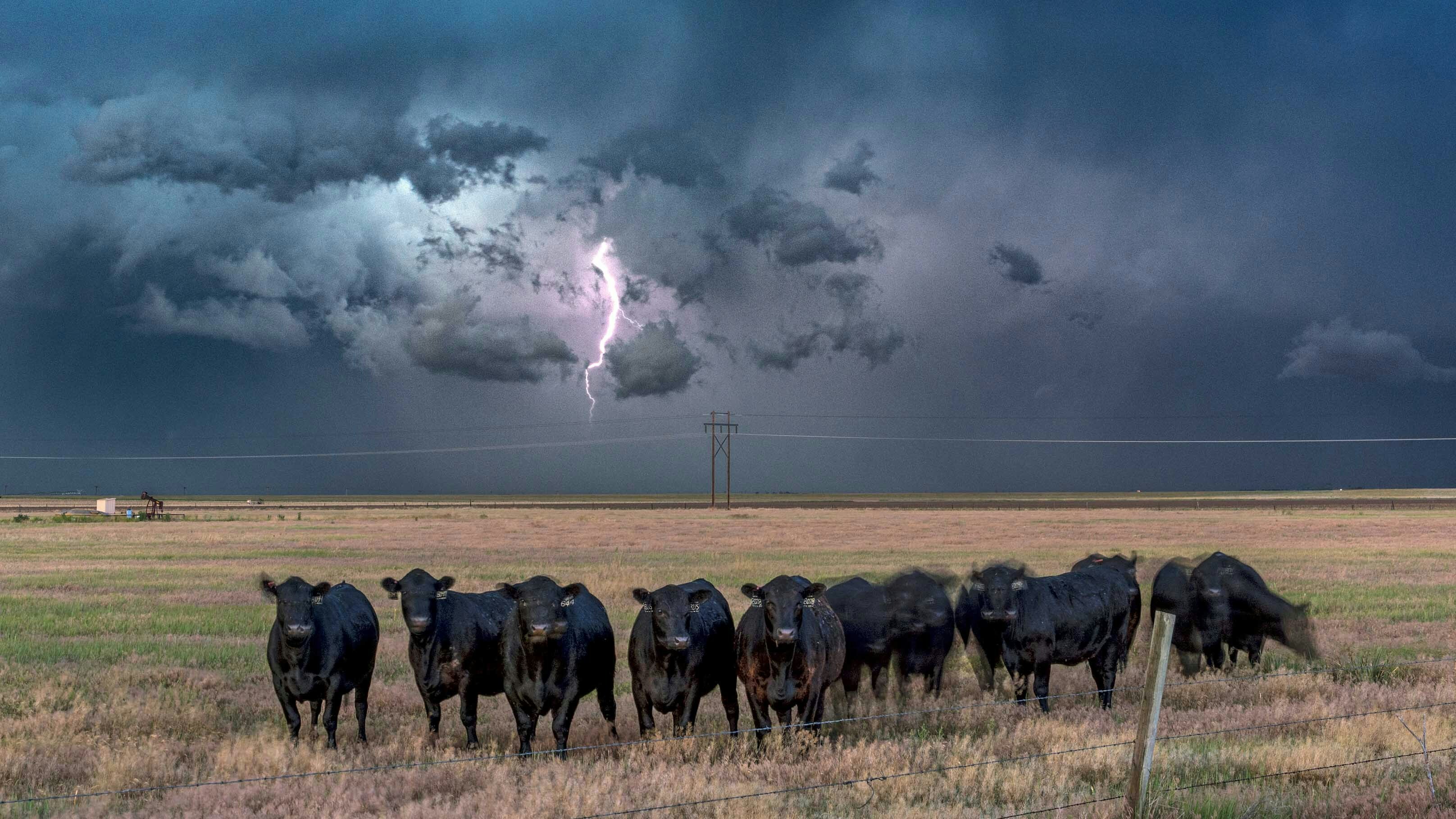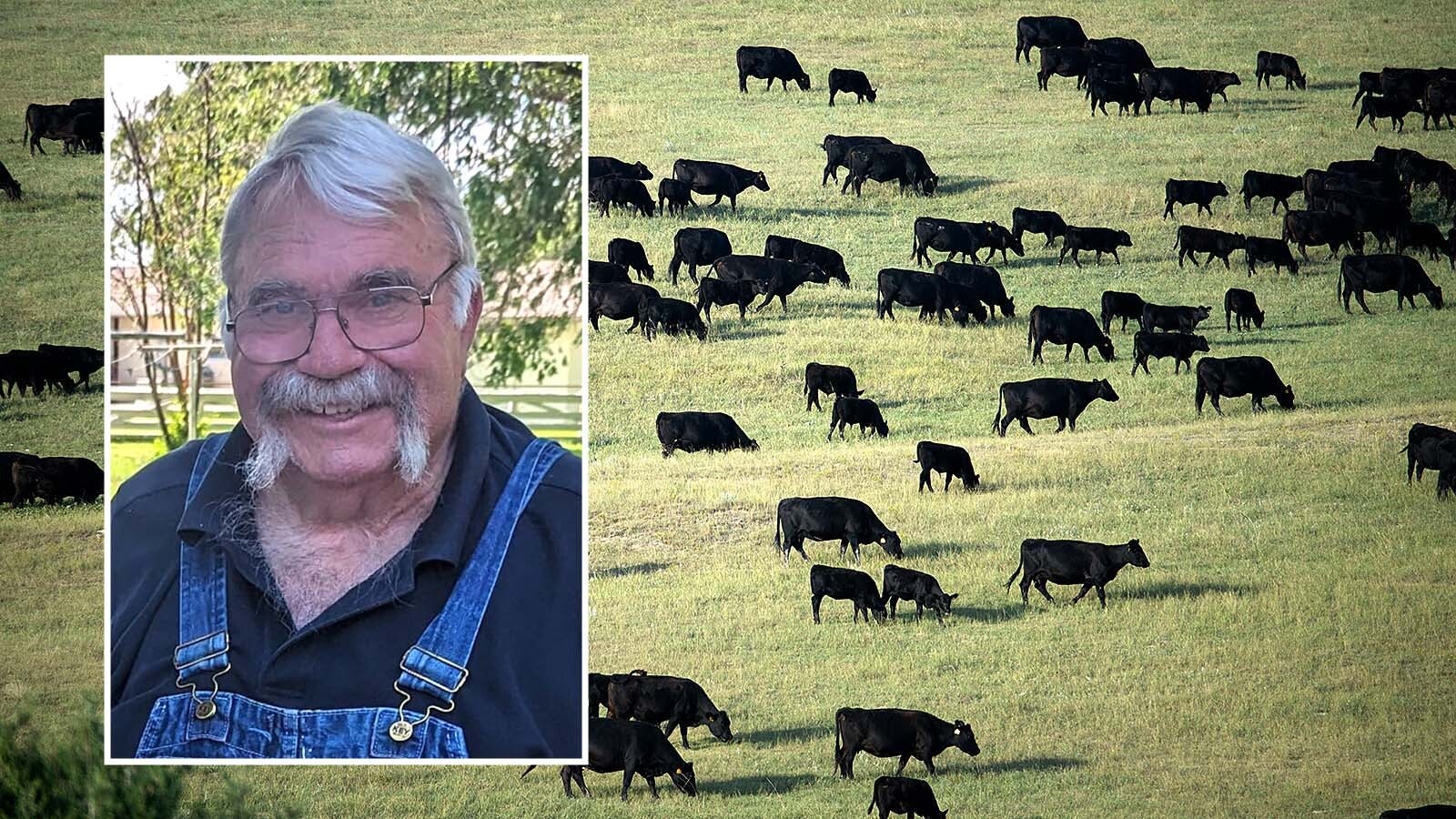By Mark Davis, Powell Tribune
The further west the caravan of state-green trucks traveled Tuesday, the harder the snow fell. After starting the week in temperatures that were 30 to 40 degrees below normal, and facing a long day in the ice-cold river, most would entertain thoughts of waiting for warmer weather.
But there was no turning back for the team of Wyoming Game and Fish Department Cody Region fisheries biologists. By 8:30 a.m., the entire crew was in the fast-moving water in the North Fork of the Shoshone River near Wapiti ready to catch fish.
As they prepared equipment needed to shock, capture and tag feisty trout, Jason Burckhardt was forced to use hot coffee from his thermos in an attempt to defrost a bottle of important medication used in the process.
“It’s frozen solid,” he said while pouring the coffee over the small plastic bottle.
Shocking, netting and processing fish without injuring them isn’t easy. In population surveys in reservoirs, like the annual surveys in Deaver Reservoir, the job is challenging enough. When you add swift-moving water, cold weather and a different species to the equation, it makes for a tough day of work.
“We’re trying to use as little electricity as possible so as not to injure the fish in doing it,” Burckhardt said. “So most of the time, they’re still actively swimming when we’re netting them. You’re also in a less stable boat because we’ve got some major whitewater on this section of river.”
The task of tagging 2,000 trout will take about eight full days of work for three to four biologists and a couple seasonal technicians. For the most part they’ve grown used to the pain of cold water mixed with wind on their hands and exposed skin. They’re on a mission, approaching the middle of a four-year project designed to answer a great regional debate: how best to protect one of the the nation’s greatest natural resources.
The Game and Fish did a robust survey of anglers last year to gather their level of support for daily harvest limits on the bucket-list stretch of the river. Predictably, it came back with mixed results.
“Twenty-eight percent of fishermen believe that our regulations are too liberal and about 10% feel they’re way too conservative,” Sam Hochhalter, Cody Region fisheries supervisor, said while waiting for the rest of the team to arrive near the entrance to the Jim Creek public access area.
It’s a tough spot for the department. No matter what they decide will likely result in complaints, though about 51% of the survey respondents think the bag limit is “about right.”
“When we’re in these situations where we’re never going to please both sides, we lean heavily on the biology,” Hochhalter said.
While there’s a lot of speculation about the population and migration between the river and the reservoir, there hasn’t been a scientific study. Last year the team started tagging 2,000 rainbows, cutthroats and cutbows (a hybrid of the two species) in an effort to quantify how many fish are in the river, how they move between the river and the reservoir and how they are affected by harvests and seasonal closures.
As the fish are caught and anglers report their catches to biologists, the department will keep the data, looking for direction based on the study at the end of the multi-year project.
“We’ll get an idea of seasonal distribution and their timing of out migration back into Buffalo Bill,” Hochhalter said.
The study will help settle the debate on how much pressure from fishing harvests is too much. Portions of the North Fork are closed to fishing during the spring spawning season.
“It’s been that way for years,” Hochhalter said.
Currently anglers are allowed to keep three trout from the river, but only one over 18 inches.
“A lot of them are over 18,” he said.
Further upstream, Yellowstone National Park changed to catch and release to protect native Yellowstone cutthroats in 1978. The Game and Fish has so far refused to do the same. Based on early results from the study, the majority of trout in the North Fork spend most of the year in the Buffalo Bill Reservoir where the limit is four fish.
“Because about two-thirds of the North Fork is closed [to fishing during the spawn], we’re protecting most of the fish population. … Harvest is not a bad thing,” he said. “We can either let fish die of old age and tumble downstream, or we can allow some anglers to harvest them knowing that in trout, anywhere from 20 to 35% of the population dies each year.”
The study hopes to determine the rate of harvest as well as the population during the different seasons. To date, data collected has concentrated only on harvest rates.
“The percent of fish that are caught and harvested tells you nothing at the population level,” Hochhalter said.
Once the population level exploitations and seasonal movements are known, then limits can be more accurately set to conserve the fishery.
“This tagging project will be the key metric that we will use to evaluate our bag limits,” he said.
Regardless of the decision, Hochhalter is unlikely to escape critics. The debate between those who want to protect the wild fish and those who want to eat more of them is boiling over with passionate opinions. The Game and Fish doesn’t stock the North Fork and it’s one of the few reservoirs where the population naturally reproduces.
Noted angler and area fly fishing guide Tim Wade said he has already caught and reported fish tagged last year. He and his clients practice catch and release in the river.
“It’s one of the few wild rivers left in the country,” he said, adding, “Wyoming is lucky to have native fish in their natural environment. In order to keep them, people need to respect the resource. If not, there’s not going to be fish to catch.”
While he doesn’t always agree with Game and Fish decisions, Wade is totally on board with attempts to better understand the habitat.
His opinion has always been that if a person wants to catch and eat a fish, they need to do so with respect for wild rivers full of native Yellowstone cutthroat trout.
“I know people think I want these fish to myself,” Wade said. “But what I want and have fought for most of my life is to protect one of the few wild native trout resources left in the country.”
The department will continue to tag fish through spring. But they need anglers’ help.
“We really need anglers to help us out,” Hochhalter said. “The more people that call in and report the capture of a tagged fish, the higher quality data we’ll get from this project.”
There is a toll-free number located on the tags along with a series of numbers identifying each individual fish. The team will head back to the river in June and July to attempt to recapture the fish post-spawn and then start again next year.





